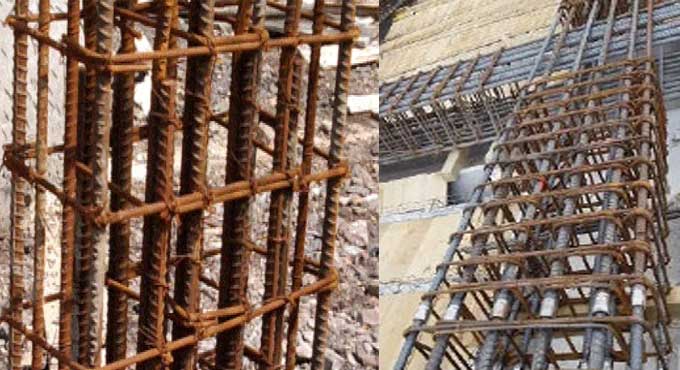
Stirrups - Types and Importance in Construction
The main purpose of a stirrup is to hold the main reinforcement bars together in a reinforced concrete element by forming a closed loop of reinforcement bars. Depending on the design and shape of the elements, stirrups can be made into a variety of shapes. Normally, aluminum beams and columns have rectangular ends, while stirrups consist of steel that connects them.
Keeping everything straight requires the use of stirrups. Stirrups help maintain order and also strengthen structures at critical points where age and use may create vulnerabilities.
Types of Stirrups
A tensile reinforcement beam vertically reinforced with steel bars evenly spaced along its length. They range between 6 and 16mm in diameter. Free ends of the stirrups are anchored in the compression zone of the beam to anchor them to the anchor bars or compression reinforcement.
Vertical stirrups have different configurations corresponding to different resistances when given a certain strain.
1. Open Stirrup
Stirrups attached to T-shaped beams are essentially single-legged stirrups. Single-legged stirrups are rarely used when only two rods need to be bound.
2. Closed Stirrup
A closed stirrup makes of a closed membrane whose cross-section is twice as large as an open stirrup, allowing it to resist greater stresses and shear forces. With more closed-in stirrups, there is a greater requirement for support and a greater need for strength.
A large quantity of reinforcement is required when concrete is poured into a closed stirrup to resist shear forces and provide a more stable structure. For the prevention of diagonal cracks, it is advisable to use stirrups that close spaces. Since shear force is highest at the supports, the spacing between stirrups is less near the supports than near the mid-span.
3. Circular Stirrup
Even though you need a circular stirrup for columns, the previous stirrup configurations apply to square and rectangular projects. Specific measurements of the stirrup can vary depending on how big the project is and how many rods it must reinforce.
4. Lateral Ties
You can also add lateral ties to your project if stirrups are not enough to support it. These bars will not form a complete loop, but they can provide additional support nevertheless.
5. Helical
Due to their similarity to DNA double helices, helical stirrups get their name. Helical stirrups resemble springs rather than perfect circles and offer additional strength mainly to circular columns.
Functions of Stirrups
The stirrup is used to hold the concrete materials together as well as the Main reinforcements on beams and columns and comes in many different shapes, including round, rectangular, square, and diamond.
Stirrups of various types are used to align Main reinforcements in beams and columns. Stirrups help prevent buckling and failure of The Beam and Column. Stirrups designs to resist compression and tensile force during the Main reinforcement process.
Importance of Stirrups
Despite looking like an immovable object from the outside, steel-reinforced concrete can deform without the proper stabilization provided by steel stirrups. Construction contractors are faced with a whole host of problems when even the slightest amount of deformation weakens the structural integrity of a project.
Despite their appearance, stirrups are a crucial part of any construction involving concrete or piles, even those in the industry who aren't familiar with them. Knowing how stirrups work is a skill you cannot overlook if you're working with steel-reinforced concrete.
Conclusion
Reinforcing bars are held in place by stirrups, a stirrup assists in resisting earthquake loads by preventing columns and beams from buckling.
In most cases, stirrups are placed perpendicular to the longitudinal orientation of reinforcement bars, but they can also be placed diagonally. In the event of cracks in beams, this prevents shear failure, which occurs diagonally. Shear capacities manage more effectively using stirrups. The designer needs to specify the spacing between the stirrups along the beam.
To get more details, watch the following video tutorial.
Video Source: F&U-FORYOU


